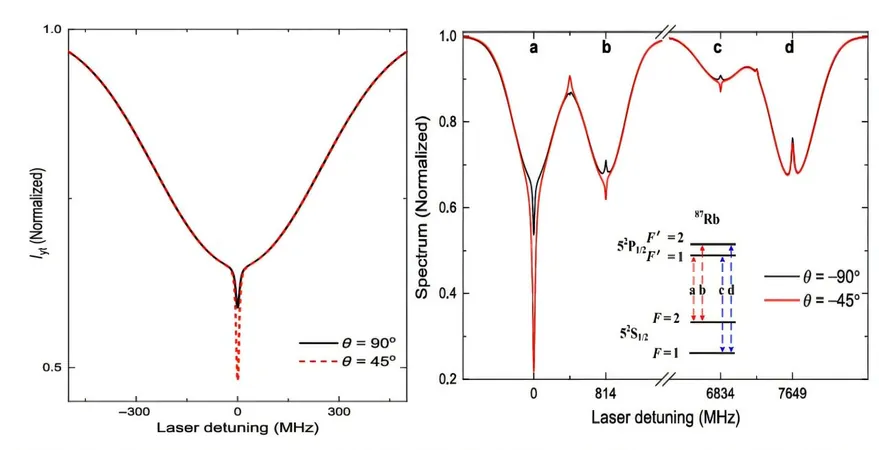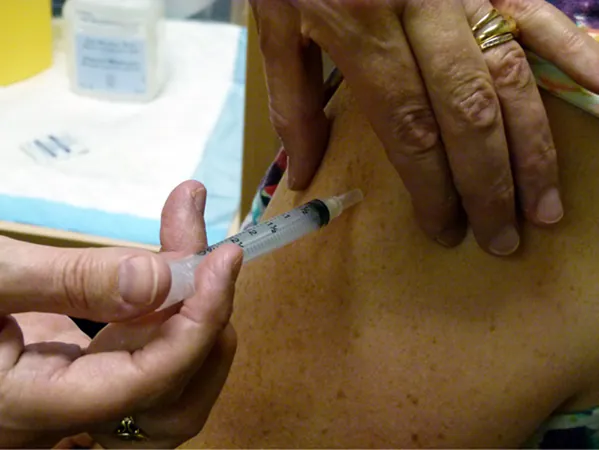
Revolutionary Compact Optical Clock Set to Redefine Precision Timing
2025-04-28
Author: Sophie
A Breakthrough in Timekeeping Technology
A groundbreaking advancement in atomic clock technology has emerged from the National Time Service Center of the Chinese Academy of Sciences. Researchers have unveiled a compact optical clock that harnesses the power of quantum interference and enhanced absorption spectroscopy, promising to be a game-changer in fields such as micro-positioning, navigation, and precise timing.
Inspired by Past Successes
Building on the success of chip-scale microwave atomic clocks and the emerging field of optical microcombs, this team has developed a chip-scale optical clock that offers superior frequency stability and accuracy. The clock's design is fundamentally rooted in the two-photon transitions of rubidium atom ensembles, a method that has shown tremendous promise.
Overcoming Major Challenges
Despite its potential, traditional optical clocks face significant hurdles, namely the high temperatures (around 100°C) and laser power requirements (approximately 10 mW). Such specifications hinder the creation of a fully miniaturized, low-power optical clock. This is where the researchers’ innovative approach comes into play.
A New Approach to Resonance
To tackle existing limitations, the team employed enhanced-absorption sub-Doppler resonances in the D1 line of rubidium. By using monochromatic light and fine-tuning the polarization of counterpropagating pump and probe beams, they achieved enhanced absorption through quantum interference. This clever technique resulted in a mechanism for high-performance optical clocks, characterized by a substantial signal-to-noise ratio.
Accessible Power and Temperature Requirements
Remarkably, the spectroscopic lines produced under this method operate with modest laser power (about 100 µW) and lower temperatures (approximately 40°C), setting the stage for a truly compact optical frequency reference.
Theoretical Insights and Experimental Validation
The researchers also presented a theoretical model that underscores the vital role of Zeeman dark states in the spectroscopic process. Their theoretical predictions align closely with experimental findings, bolstering confidence in the viability of this methodology.
Unprecedented Frequency Stability Achieved
To evaluate the clock's frequency stability, two identical diode lasers were stabilized to these enhanced-absorption sub-Doppler resonances. The team conducted a thorough investigation of key parameters affecting resonance features, ultimately achieving a fractional frequency stability of 1.8 x 10⁻¹² at 1 second and below 10⁻¹¹ at 10,000 seconds. This is a monumental improvement, exceeding prior benchmarks by more than two orders of magnitude.
Implications for Future Applications
These impressive results herald the potential for a compact or even chip-scale optical frequency reference that could reshape various industries, including instrumentation, navigation systems, and precise metrology. The future of timing and positioning technologies looks brighter than ever!









 Brasil (PT)
Brasil (PT)
 Canada (EN)
Canada (EN)
 Chile (ES)
Chile (ES)
 Česko (CS)
Česko (CS)
 대한민국 (KO)
대한민국 (KO)
 España (ES)
España (ES)
 France (FR)
France (FR)
 Hong Kong (EN)
Hong Kong (EN)
 Italia (IT)
Italia (IT)
 日本 (JA)
日本 (JA)
 Magyarország (HU)
Magyarország (HU)
 Norge (NO)
Norge (NO)
 Polska (PL)
Polska (PL)
 Schweiz (DE)
Schweiz (DE)
 Singapore (EN)
Singapore (EN)
 Sverige (SV)
Sverige (SV)
 Suomi (FI)
Suomi (FI)
 Türkiye (TR)
Türkiye (TR)
 الإمارات العربية المتحدة (AR)
الإمارات العربية المتحدة (AR)